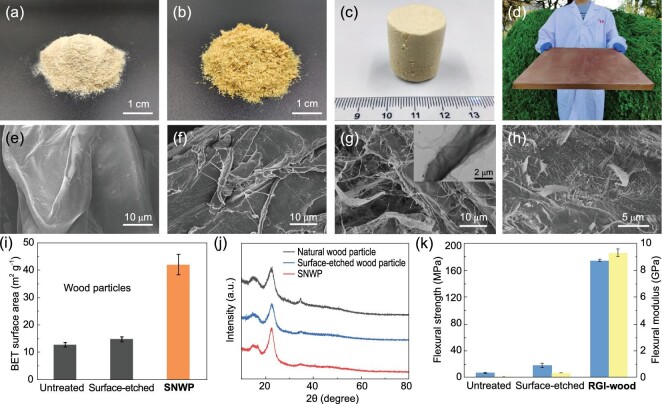Figure 2.
Structure of RGI-wood. Photographs of (a) untreated wood sawdust (natural wood particles), (b) surface-etched freeze-dried wood particles and (c) freeze-dried free-standing sponge of SNWP. (d) RGI-wood sample with a volume of 400 × 400 × 19 mm3, weighing 4.1 kg. Scanning electron microscope (SEM) images of (e) untreated wood particles, (f) surface-etched wood particles with the cellulose microfibers exposed from surface, (g) freeze-dried SNWP with numerous cellulose nanofibers expanding from surface and (h) section of RGI-wood sample, a large number of cellulose nanofibers pulling out during the break. (i) The BET surface areas of natural wood particles, surface-etched wood particles and SNWP are 12.63 m2 g−1, 14.72 m2 g−1 and 41.99 m2 g−1, respectively. (j) XRD patterns show that the crystallinity of cellulose of natural wood particles is 63.9 ± 0.70%, whereas that of SNWP is 71.4 ± 0.26%, which confirms a typical feature of cellulose nanofibers. (k) The increasing mechanical performance of different stages of wood particles proved that the outstanding mechanical performance results from the surface nanostructure of the wood particles in RGI-wood. The blue columns represent flexural strength and the yellow columns represent flexural modulus.

